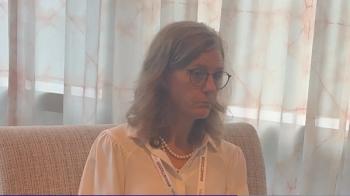
Social Challenges Can Be Significant
In their informative article, Richard O’Hara and Diane Blum touch on several key challenges of cancer survivorship. Looking at cancer through the lens of social concerns and developmental issues, they have brought important psychosocial aspects of survivorship to the forefront of our attention, with a particular focus on the domain of social well-being within the parameters of interpersonal relationships, and financial, employment, insurance, and legal issues.
This Article reviews the following:
In their informative article, Richard O’Hara and Diane Blum touch on several key challenges of cancer survivorship. Looking at cancer through the lens of social concerns and developmental issues, they have brought important psychosocial aspects of survivorship to the forefront of our attention, with a particular focus on the domain of social well-being within the parameters of interpersonal relationships, and financial, employment, insurance, and legal issues.
In terms of developmental factors, the authors do a good job of delineating the ways in which one’s life stage can affect the impact of cancer. The challenges faced by young adults are contrasted well with those of an older population whose life experiences and needs shape an experience of illness very different from that of younger survivors. Blum and Hara remind us that cancer is not just one disease and its impact does not lead to just one outcome or experience. Indeed the impact is multifactorial, widespread, and depends upon a host of factors including but not limited to personal life stage (eg, a survivor living with his or her parents vs one who is a parent to young children) and financial status.
While the authors cite survivors’ family relationships as integral to the social impact of cancer. I would like to have seen this aspect of cancer survivorship developed further beyond the sad but true fact that families have a strong need at the end of treatment to put the cancer experience behind them and return “normal” lives. We know that the tendency to see the illness as “over” and “in the past” exists, and we know that patients can suffer from feeling withdrawal of support from their families at a critical time.
That said, my curiosity is aroused as to the thoughts and feelings of family members as their loved ones grapple with how to make sense of their illness and find meaning in the cancer experience. Do families feel the disconnect in the same way that patients do? Do they feel left behind as patients explore new strategies for dealing with uncertainty? Are they harboring resentment about financial changes? How do patients and their families bridge this period with continued efforts to understand each other’s reality?
The financial implications of a cancer diagnosis are huge, and the myriad ways in which patient’s finances are impacted-from job loss, to job lock, to costs incurred with treatment copays and deductibles, as well as the high cost of insurance premiums and COBRA-are well described by the authors. They point out the travesty that more than half of American families filing for bankruptcy cite medical bills as the reason for their insolvency. Clearly, the financial hardship stemming from diagnosis and treatment of cancer cannot be overstated.
I agree with the authors’ basic premise that the impact of cancer on patients is devastating, but I question their suggestion that “stigma” is what holds people back in the workplace. According to Webster’s dictionary, the word “stigma” connotes disgrace or reproach; however, discrimination against cancer patients appears to be less about social disgrace and more about the financial bottom line for a company. Examples of cancer survivors in the public arena who have done well include Bob Dole, John Kerry, and John McCain; in the entertainment arena, Melissa Etheridge and Sheryl Crow; and in the world of sports, the first-class athlete, Lance Armstrong.
None of these people has been held back by “stigma.” Each has adequate wealth, suggesting to me that it is not the “stigma” of illness but rather the financial cost of illness that accounts for discrimination in the workplace. Words are powerful, so let us not use “stigma” to reinforce any negative view of cancer patients and let us instead label the phenomenon for what it is-discrimination based not on one’s disease but on a company’s operating budget.
Lastly, I offer kudos to the authors for the resources that they chose to include in their article: From a wealth of possible resources they skillfully selected the most essential in each category, providing a manageable yet complete list of referral sources from which to work. I also want to praise the authors for focusing attention on the social aspects of surviving cancer. As they point out, for some patients the psychosocial sequelae of this illness are as difficult to overcome as the physical ones.
Newsletter
Stay up to date on recent advances in the multidisciplinary approach to cancer.


















































































